Learn how to cut a mango in just a few steps with my easy guide! Cutting a mango into cubes is easily done in three simple steps– carefully slicing the flesh away from the oblong pit, scoring the flesh with crosswise cuts, and cutting the mango away from the peel.
Cut mango is a wonderful warm-weather snack during the summer mango season. I store ripe mangos in the refrigerator, so I’m able to quickly slice them and enjoy them chilled whenever I want a cold, fresh snack. You can even freeze cubed mango for use in smoothies (or margaritas!). Otherwise, use this tutorial on how to cut a mango to make mango salsa, mango cheesecake, and salmon tacos.
How To Tell When A Mango Is Ripe
It’s really easy to tell when a fresh mango is ripe and ready for cutting! Here are the best indicators:
- Skin color: The most obvious indicator is how colorful the skin is. Mangos start green and turn colorful as they ripen. The most common large mangos you will find in the store are often referred to as “red mangos” (or Tommy Atkins variety). They will turn from green to gold/orange to deep red as they ripen. Honey mangos (or Ataulfo variety) will turn from pale green to fully golden yellow when ripe.
- Smell: You’re looking for a strong, sweet fragrance with floral undertones.
- Gently squeeze: Unripe mangos are very firm. A ripe mango will give slightly with pressure, an excellent sign that the flesh within is tender and ripe. Note that it should not be so soft that your fingers sink into it with a gentle squeeze. A mushy mango is overripe. Reserve those overripe mangoes to blend into smoothies!

How To Cut A Mango
Equipment
- Chef’s knife or small serrated knife.
Ingredients
- 1 ripe mango
Instructions
- Cut the sides away from the pit: First, cut a thin slice off the bottom (stem side) so the mango can stand upright without wobbling. Using a sharp knife, start at the top of the mango and cut off one of the wide sides, guiding the knife around the oval-shaped pit in the center. Repeat on the other wide side. (You will have two mango “cheeks”.) Cut away the short sides the same way.
- Score the mango: Place the mango skin-side down on a cutting board. Cut a grid through the mango flesh by applying enough pressure to cut down to the skin but not right through it. (A smaller paring knife may be easier for you to use for this step.)
- Cut the mango flesh away from the skin: Push the skin inside out so you have cubes of fresh mango sticking out. Cut the diced mango away from the skin with a knife or scoop it out with a spoon.
- You can also trim any extra mango flesh from the pit to make sure there is no waste.
Notes
- A ripe but still slightly firm mango is easiest to cut. If the flesh is very soft and the skin is wrinkled, you can still cut the mango, but exercise more caution. The mango will be a bit harder to handle since the flesh is so soft. The flesh may also not hold in sturdy chunks and can easily fall apart or turn mushy.
- Refrigerate the diced mango in an airtight container. It is best used within 24 hours.
Nutrition
How To Cut A Mango
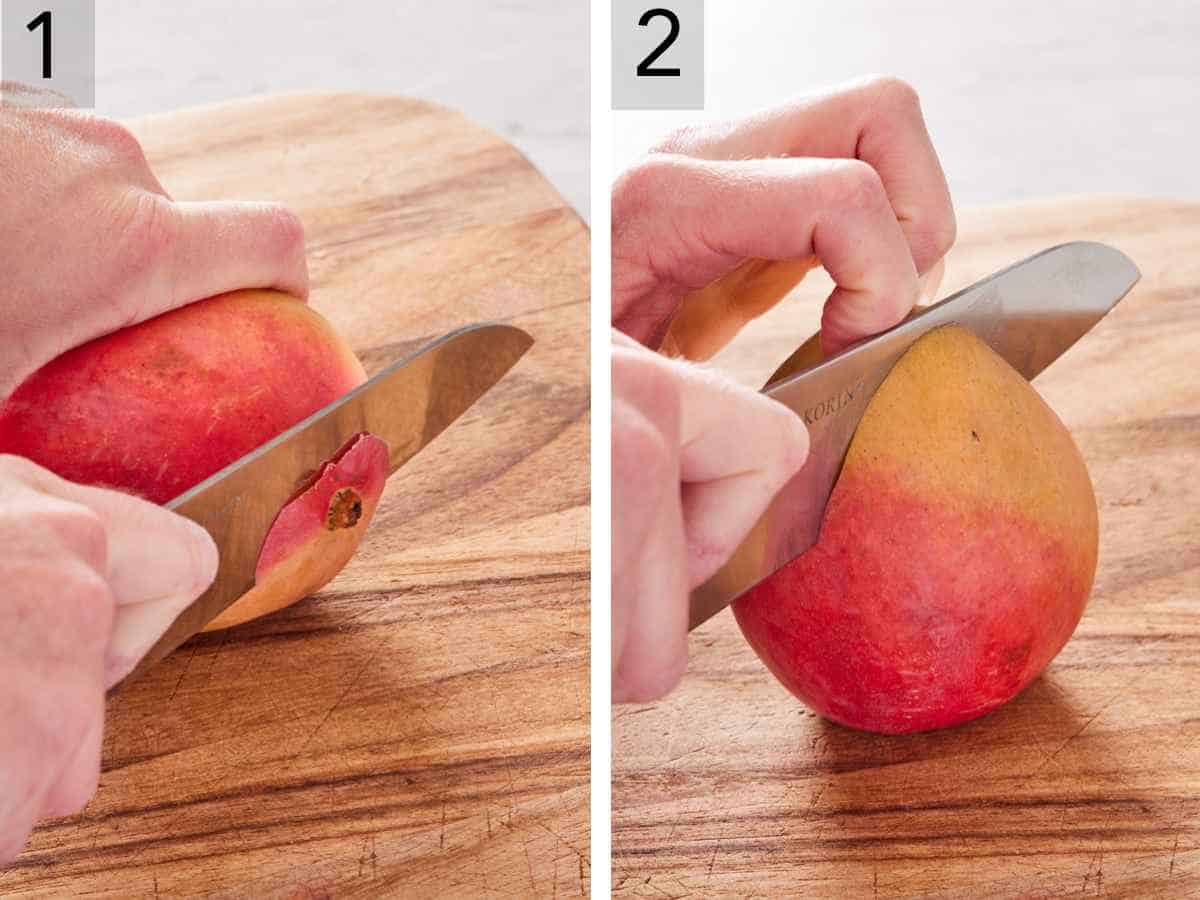
1. Cut a thin slice off the stem end so there is a flat surface to stand the mango upright.
2. Starting at the top of the mango, use a sharp knife to cut the two wide sides off of the pit.
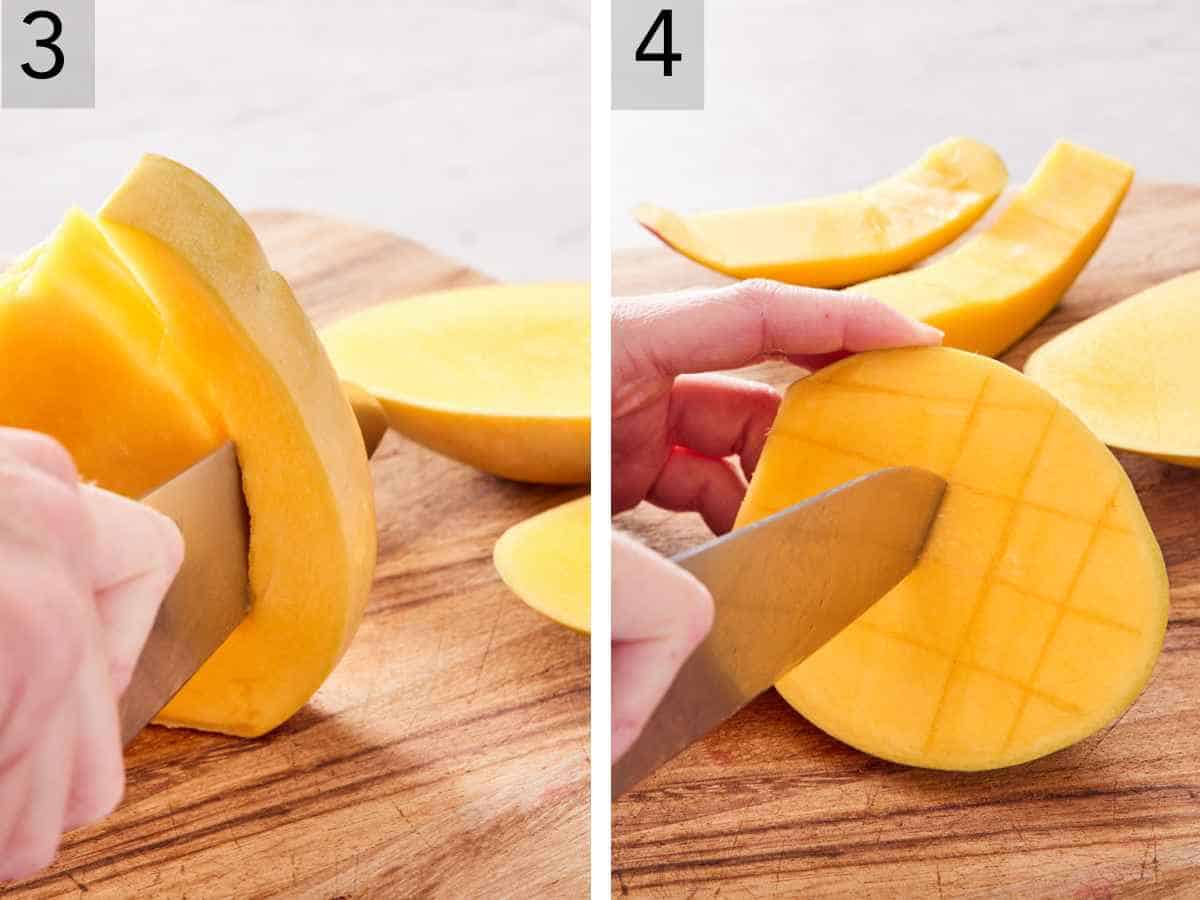
3. Repeat with the narrow sides of the pit.
4. Place each of the mango slices peel-side down on a cutting board. Cut a grid pattern into the mango flesh without breaking the skin.
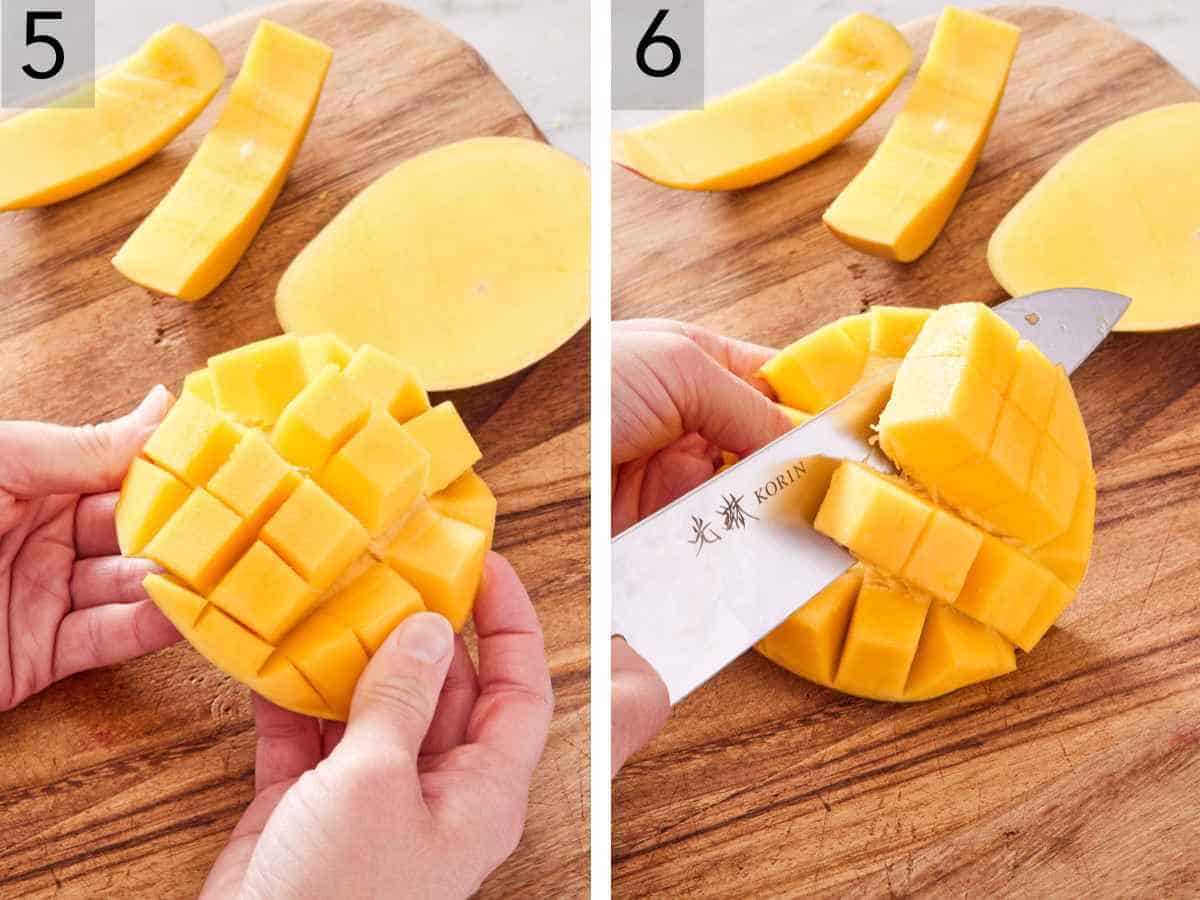
5. Push the peel inside out so the mango flesh is more exposed and separates between the cuts.
6. Use your knife to cut the cubes away from the skin, or use a spoon to scoop them out.
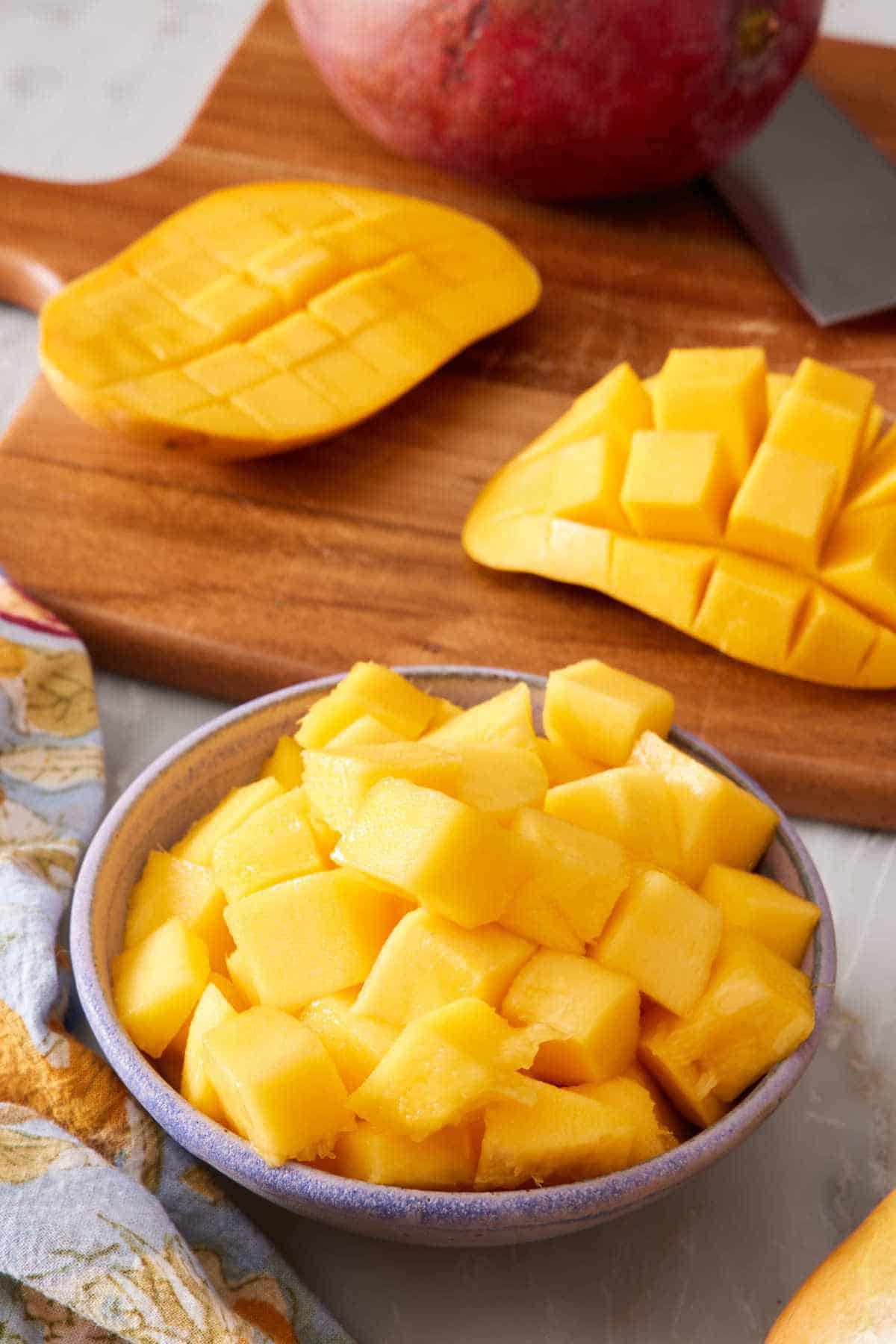
How To Gauge The Size Of The Stone
Knowing the approximate size of the mango seed will help you not cut into it and will reduce the amount of mango flesh left on the pit after cutting it. The best way to guess its size is to poke the tip of your knife into one of the fatter sides of the mango. See how far it goes in until it hits the side of the pit in the center of the mango. Use that depth to gauge roughly where to cut off the sides of the mango. So simple!
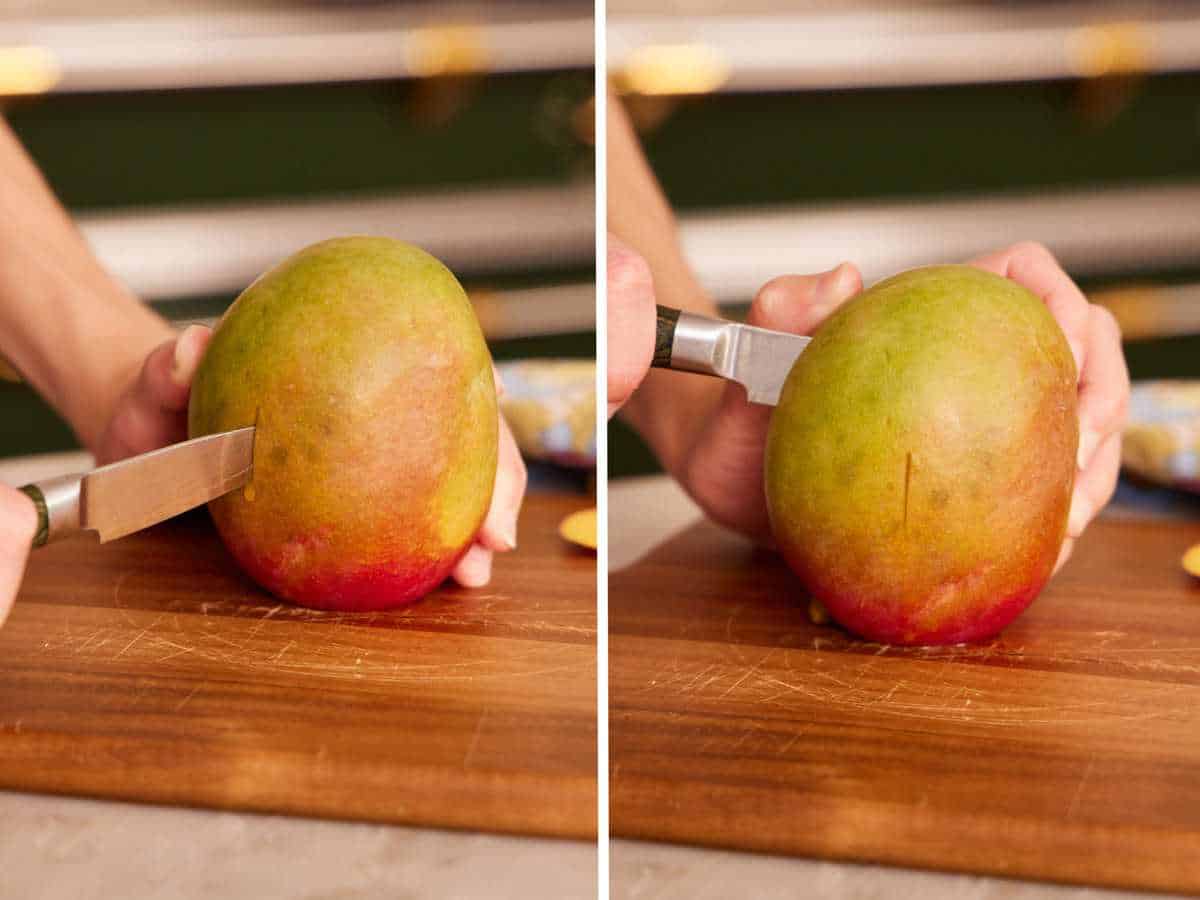
How Do You Use A Glass To Remove Mango Flesh?
Grab a clean, thin-rimmed glass and try this simple hack! After completing Step 1, you’ll have 4 pieces of mango flesh with the skin still on. You can leave the pieces as-is or score the grid into the flesh. With the flesh side of the fruit facing the glass and the skin facing out, press the mango into the top rim of the glass so the glass slides between the flesh and the skin. The flesh will fall into the glass, and you can discard the skin. Repeat with the other mango cheeks.

The Seed Is Your Treat
There is often some flesh left around the pit of the mango. I like to just eat this myself, sort of like how I’d eat corn off the cob! It’s the perfect chef’s treat. (Remember that juicy mangos can get messy; you’ve been warned!)
Pro Tips For Cutting A Mango
- Choose the right knife: I use a sharp chef’s knife for the entire process, from cutting off the cheeks from the pit to scoring the flesh. But you can use a small paring knife for the scoring step instead for more precision, or if you are less comfortable wielding a large knife.
- To freeze the cut mango, place the cubed pieces in a single layer on a parchment paper-lined sheet tray. Freeze until sold, then transfer to a freezer-safe bag or airtight container and store for up to 3 months.
- Mangos are more fibrous closer to the pit, so keep that in mind when you are cutting around it. If it feels like your knife is cutting through something a bit crunchy or thread-like, you are probably a little too close to the pit. Angle the knife blade outward a bit and continue slicing.
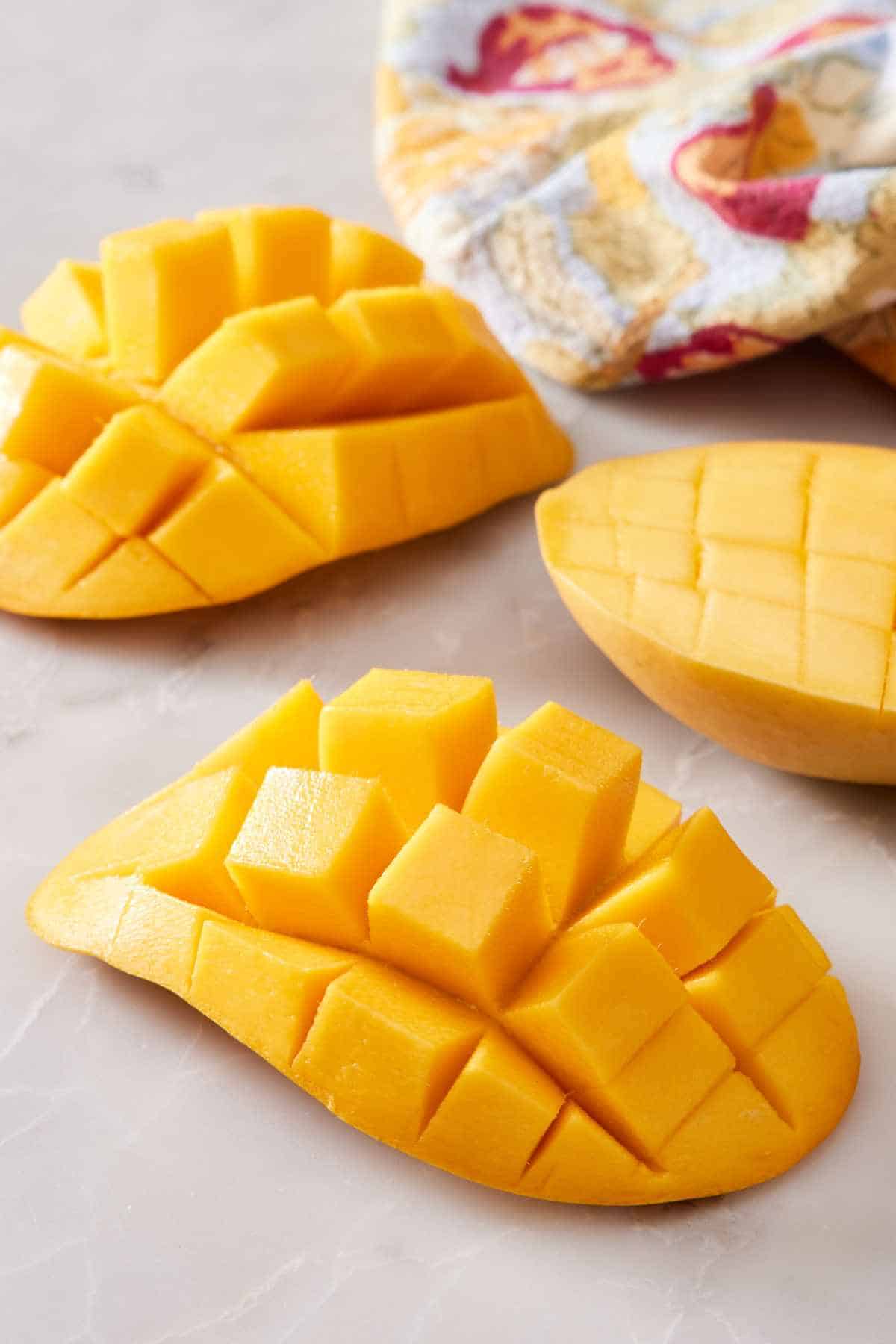
Frequently Asked Questions
Yes! All mangos have a pit in the middle and will need to have their flesh cut off of it. A smaller variety, like honey mangos, will have less flesh around the pit and thinner skin, but this method works regardless of the size or type of mango.
If you bought mangos from the store that need a day or two to ripen, simply store them on your kitchen counter side by side, not stacked. Stacking can lead to bruising and soft spots, as mangos are quite delicate when they soften. Allow them to ripen at room temperature.
Once the mangos are ripe, pop them into the crisper of your refrigerator for up to 1 week. The cold fridge will slow down the ripening process significantly, so you can have a perfectly ripe mango on hand for several days!
Yes! Mango peels are not edible. In fact, if you have an allergy to poison ivy or poison oak, I recommend wearing gloves when handling mangos. The peels contain urushiol, the skin irritant in poison ivy and oak that can cause itching, swelling, or a rash. Mango flesh does not contain urushiol and is safe to eat.
If you’ve tried this how to cut a mango tutorial, then don’t forget to rate it and let me know how you got on in the comments below. I love hearing from you!



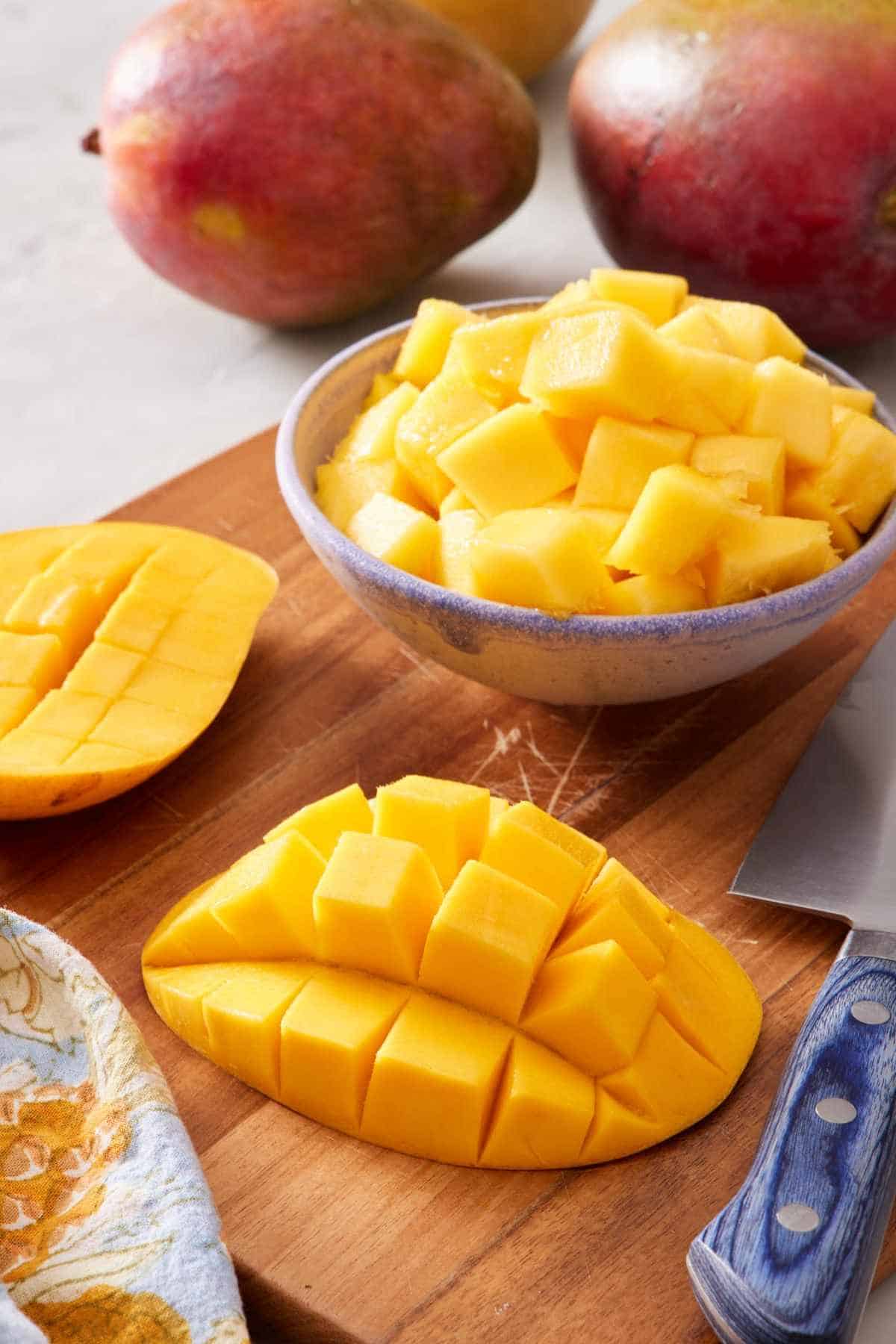





Aliyah says
I am so happy someone actually showed something like this, i have tried and tried, but i never figured out how to cut a mango like they do in the movies, or on beaches!!! I am only 12 years old, but I am already looking for so many things to make at home. sometimes my parents even have to push me away from the kitchen so they can use it for like 2 minutes!!!!